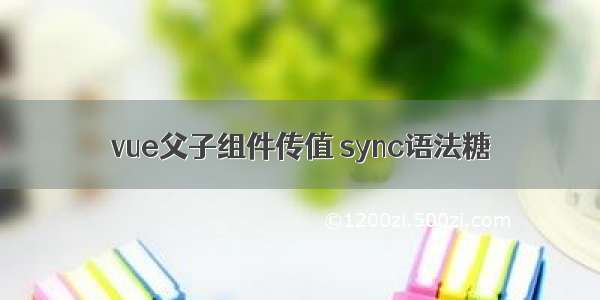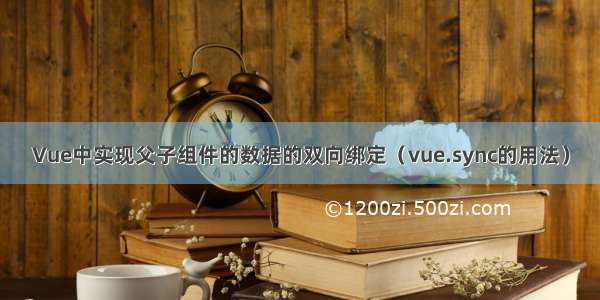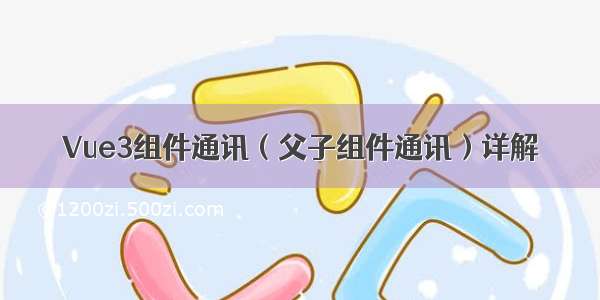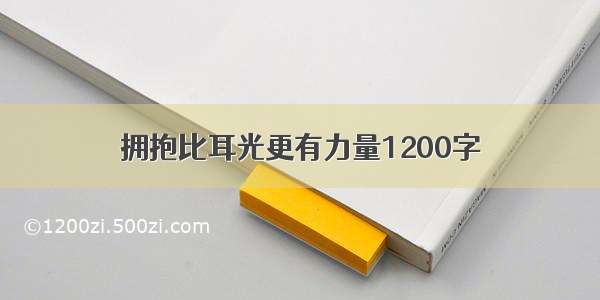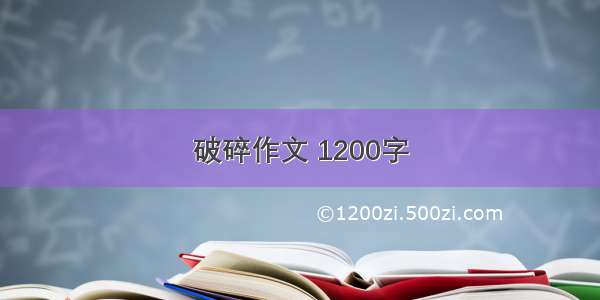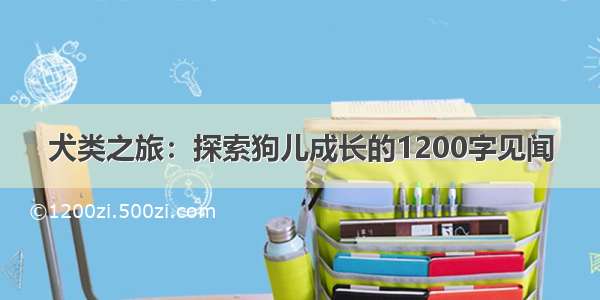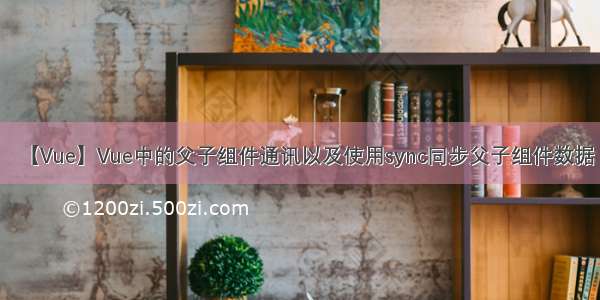
前言:之前写过一篇文章《在不同场景下Vue组件间的数据交流》,但现在来看,其中关于“父子组件通信”的介绍仍有诸多缺漏或者不当之处, 正好这几天学习了关于用sync修饰符做父子组件数据双向绑定的的用法, 于是决定写一篇文章, 再次总结下“Vue中的父子组件通信”。
前面提示:本文文字略少,代码略多
父子组件通讯,可分为两种情况:
1. 父组件向子组件中传递数据
2. 子组件向父组件中传递数据
一般情况下, 1中情况可通过props解决数据传递的问题, 这里就不多赘述了。
子组件向父组件中传递数据
主要谈谈2中情景的实现,有三种方式:
一.通过props,父组件向子组件中传递数据和改变数据的函数,通过在子组件中调用父组件传过来的函数,达到更新父组件数据(向父组件传递数据)的作用(子组件中需要有相应的响应事件)
二.通过在子组件中触发一个 自定义事件(vm.$emit),将数据作为vm.$emit方法的参数,回传给父组件用v-on:[自定义事件]监听的函数
三.通过ref对子组件做标记,父组件可以通过vm.$refs.[子组件的ref].[子组件的属性/方法]这种方式直接取得子组件的数据
下面我将一 一展示
一. 通过props从父向子组件传递函数,调用函数改变父组件数据
这里就不做代码展示了
一来是因为相对比较简单
二来是因为这种方式显然不是Vue中的最佳实践(在react中倒比较常见)
想要看代码的话可以看这里:《【Vue】浅谈Vue不同场景下组件间的数据交流》/penghuwan/p/7286912.html#_label1 (在兄弟组件的数据交流那一节)
二. 通过自定义事件从子组件向父组件中传递数据
我们可以在子组件中通过$emit(event, [...参数])触发一个自定义的事件,这样,父组件可以在使用子组件的地方直接用 v-on来监听子组件触发的事件, 并且可以在监听函数中依次取得所有从子组件传来的参数
例如:
在子组件中某个部分写入:
this.emit('eventYouDefined', arg);
然后你就可以在父组件的子组件模板里监听:
// 这里是父组件的Template:
<Son v-on: eventYouDefined = "functionYours" />
下面是一个实例
父组件
<template><div id="father"><div>我是父组件,我接受到了:{{ text || '暂无数据' }}<son v-on:sendData='getSonText'></son></div></div></template><script>import son from './son.vue'export default {data: function () {return {text: ''}},components: {son: son},methods: {getSonText (text) {this.text = text}}}</script><style scoped>#father div {padding: 10px;margin: 10px;border: 1px solid grey;overflow: hidden;}</style>
子组件:
<template><div><p>我是子组件,我所拥有的数据: {{ text }}</p><button @click="sendData">发送数据</button></div></template><script>export default {data () {return {text: '来自子组件的数据'}},methods: {sendData () {this.$emit('sendData', this.text)}}}</script><!-- Add "scoped" attribute to limit CSS to this component only --><style scoped>button { float: left }</style>
在点击子组件中的“发送数据”按钮前, 父组件还没有接受到数据(text为空字符串),则通过 {{ text || '暂无数据' }}将显示默认文本:‘暂无数据’
点击“发送数据”按钮后:
因为sendData自定义事件被触发,通过
this.$emit('sendData', this.text) //此处的this指向子组件实例)
子组件的text数据被父组件中:
<son v-on:sendData='getSonText'></son>
中的getSonText函数作为参数接传参受到, 从而完成了从子组件向父组件中的传参过程
三. 通过ref属性在父组件中直接取得子组件的数据(data)
对于我们上面讲的一和二的处理情景来说,有个局限性就是它们都需要以事件机制为基础(无论是像click那样的原生事件还是自定义事件),而在事件发生的时候才能调用函数将数据传递过来
但如果子组件里没有类似“按钮”的东西,因而无法制造原生事件,同时也没办法找到一个触发自定义事件的时机的时候,怎么从子组件向父组件传递数据呢??
这个时候,我们就只能从父组件中“直接取”子组件的数据了,借助ref属性
ref是我们经常用到的Vue属性,利用它可以简单方便地从本组件的template中取得DOM实例,而实际上,如果你在父组件中为子组件设置ref的话, 就可以直接通过vm.$refs.[子组件的ref].[子组件的属性]去拿到数据啦,例如:
父组件:
<template><div id="father"><div>我是父组件,我接受到了:{{ text || '暂无数据' }}<button @click="getSonText()">接受数据</button><son ref='son'></son></div></div></template><script>import son from './son.vue'export default {data: function () {return {text: ''}},components: {son: son},methods: {getSonText () {this.text = this.$refs.son.text}}}</script><style scoped>#father div {padding: 10px;margin: 10px;border: 1px solid grey;overflow: hidden;}</style>
子组件:
<template><div><p>我是子组件,我所拥有的数据: {{ text }}</p></div></template><script>export default {data () {return {text: '来自子组件的数据'}}}</script><!-- Add "scoped" attribute to limit CSS to this component only --><style scoped>button { float: left }</style>
demo:
尚未点击“接受数据”按钮前:
点击接受数据按钮后:
通过sync实现数据双向绑定, 从而同步父子组件数据
通过以上三种方式, 我想你应该能解决绝大多数父子组件通信的场景了,但让我们再仔细考虑一下上面的通信场景,就会发现它们还可能存在的问题:
从子组件向父组件传递数据时,父子组件中的数据仍不是每时每刻都同步的
但在某些特殊的需求场景下,我们可能会希望父子组件中的数据时刻保持同步, 这时候你可能会像下面这样做:
这是父组件中的template:
<son :foo="bar" v-on:update="val => bar = val"></son>
在子组件中, 我们通过props声明的方式接收foo并使用
props: {foo: [type]}
同时每当子组件中数据改变的时候,通过
this.$emit('update', newValue)
把参数newValue传递给父组件template中监听函数中的"val"。然后通过
val => bar = val
这个表达式就实现了bar = newValue. 这个时候,我们发现父组件中的关键数据bar被子组件改变(相等)了!
通过数据的双向绑定, 父(组件)可以修改子的数据, 子也可以修改父的数据
Vue提供了sync修饰符简化上面的代码,例如:
<comp :foo.sync="bar"></comp>
会被扩展为:
<comp :foo="bar" @update:foo="val => bar = val"></comp>
然后你需要在子组件中改变父组件数据的时候, 需要触发以下的自定义事件:
this.$emit("update:foo", newValue)
【注意】你可能觉得这好像和我上面提到的二中的“通过自定义事件(emit)从子组件向父组件中传递数据”的那一节的内容似乎重叠了,。
然而并不是, 两者有着父子组件关系上的不同, 下面我通过一行关键的代码证明它们的区别所在
1.在我们讲解sync的这一小节里, 自定义事件发生时候运行的响应表达式是:
<son :foo="bar" v-on:update="val => bar = val"></son> 中的 "val => bar = val"
2.在二中的“通过自定义事件从子组件向父组件中传递数据” 里,自定义事件发生时候运行的响应表达式是:
<Son v-on: eventYouDefined = "arg => functionYours(arg)" /> 中的 "arg => functionYours(arg)"
对前者,表达式 val => bar = val意味着强制让父组件的数据等于子组件传递过来的数据, 这个时候,我们发现父子组件的地位是平等的。 父可以改变子(数据), 子也可以改变父(数据)
对后者,你的functionYours是在父组件中定义的, 在这个函数里, 你可以对从子组件接受来的arg数据做任意的操作或处理,决定权完全落在父组件中, 也就是: 父可以改变子(数据), 但子不能直接改变父(数据)!, 父中数据的变动只能由它自己决定
下面是一个展示demo:
父组件:
<template><div id="father"><div>我是父组件<son:wisdom.sync="wisdom":magic.sync="magic":attack.sync="attack":defense.sync="defense"></son><p>智力: {{ wisdom }}</p><p>膜法: {{ magic }}</p><p>攻击: {{ attack }}</p><p>防御: {{ defense }}</p></div></div></template><script>import son from './son.vue'export default {data: function () {return {wisdom: 90,magic: 160,attack: 100,defense: 80}},components: {son: son}}</script><style scoped>#father div {padding: 10px;margin: 10px;border: 1px solid grey;overflow: hidden;}</style>
子组件:
<template><div><p>我是子组件</p><p>智力: {{ wisdom }}</p><p>膜法: {{ magic }}</p><p>攻击: {{ attack }}</p><p>防御: {{ defense }}</p><button @click="increment('wisdom')">增加智力</button><button @click="increment('magic')">增加膜法</button><button @click="increment('attack')">增加攻击</button><button @click="increment('defense')">增加防御</button></div></template><script>export default {props: {wisdom: Number,magic: Number,attack: Number,defense: Number},methods: {increment (dataName) {let newValue = this[dataName] + 1this.$emit(`update:${dataName}`, newValue)}}}</script><!-- Add "scoped" attribute to limit CSS to this component only --><style scoped>button { float: left }</style>
点击前:
点击增加子组件中“增加智力”按钮的时候, 父组件和子组件中的智力参数同时从90变为91
点击增加子组件中“增加膜法”按钮的时候, 父组件和子组件中的智力参数同时从160变为161
数据双向绑定是把双刃剑
从好处上看:
1.它实现了父子组件数据的“实时”同步, 在某些数据场景下可能会使用到这一点
2.sync提供的语法糖使得双向绑定的代码变得很简单
从坏处上看:
它破环了单向数据流的简洁性, 这增加了分析数据时的难度
当sync修饰的prop是个对象
我们对上面的例子修改一下, 把数据包裹在一个对象中传递下来:
父组件
<template><div id="father"><div>我是父组件<son :analysisData.sync="analysisData"></son><p>智力: {{ analysisData.wisdom }}</p><p>膜法: {{ analysisData.magic }}</p><p>攻击: {{ analysisData.attack }}</p><p>防御: {{ analysisData.defense }}</p></div></div></template><script>import son from './son.vue'export default {data: function () {return {analysisData: {wisdom: 90,magic: 160,attack: 100,defense: 80}}},components: {son: son}}</script><style scoped>#father div {padding: 10px;margin: 10px;border: 1px solid grey;overflow: hidden;}</style>
子组件:
<template><div><p>我是子组件</p><p>智力: {{ analysisData.wisdom }}</p><p>膜法: {{ analysisData.magic }}</p><p>攻击: {{ analysisData.attack }}</p><p>防御: {{ analysisData.defense }}</p><button @click="increment('wisdom')">增加智力</button><button @click="increment('magic')">增加膜法</button><button @click="increment('attack')">增加攻击</button><button @click="increment('defense')">增加防御</button></div></template><script>export default {props: {analysisData: Object},methods: {increment (dataName) {let newObj = JSON.parse(JSON.stringify(this.analysisData))newObj[dataName] += 1this.$emit('update:analysisData', newObj)}}}</script><!-- Add "scoped" attribute to limit CSS to this component only --><style scoped>button { float: left }</style>
demo同上
不要通过在子组件中修改引用类型props达到“父子组件数据同步”的需求!
父组件的数据传递给子组件, 一般通过props实现, 而在实现“父子组件数据同步”这一需求的时候, 小伙伴们可能会发现一点: 在子组件中修改引用类型的props(如数组和对象)是可行的
1.不仅可以达到同时修改父组件中的数据(因为本来引用的就是同一个数据)
2.而且还不会被Vue的检测机制发现!(不会报错)
但千万不要这样做, 这样会让数据流变得更加难以分析,如果你尝试这样做, 上面的做法可能会更好一些
不要这样做,糟糕的做法:
父组件:
<template><div id="father"><div>我是父组件<son :analysisData="analysisData"></son><p>智力: {{ analysisData.wisdom }}</p><p>膜法: {{ analysisData.magic }}</p><p>攻击: {{ analysisData.attack }}</p><p>防御: {{ analysisData.defense }}</p></div></div></template><script>import son from './son.vue'export default {data: function () {return {analysisData: {wisdom: 90,magic: 160,attack: 100,defense: 80}}},components: {son: son}}</script><style scoped>#father div {padding: 10px;margin: 10px;border: 1px solid grey;overflow: hidden;}</style>
子组件:
<template><div><p>我是子组件</p><p>智力: {{ analysisData.wisdom }}</p><p>膜法: {{ analysisData.magic }}</p><p>攻击: {{ analysisData.attack }}</p><p>防御: {{ analysisData.defense }}</p><button @click="increment ('wisdom')">增加智力</button><button @click="increment ('magic')">增加膜法</button><button @click="increment ('attack')">增加攻击</button><button @click="increment ('defense')">增加防御</button></div></template><script>export default {props: {analysisData: Object},methods: {increment (dataName) {let obj = this.analysisDataobj[dataName] += 1}}}</script><!-- Add "scoped" attribute to limit CSS to this component only --><style scoped>button { float: left }</style>
demo同上, 但这并不是值得推荐的做法
【完】

